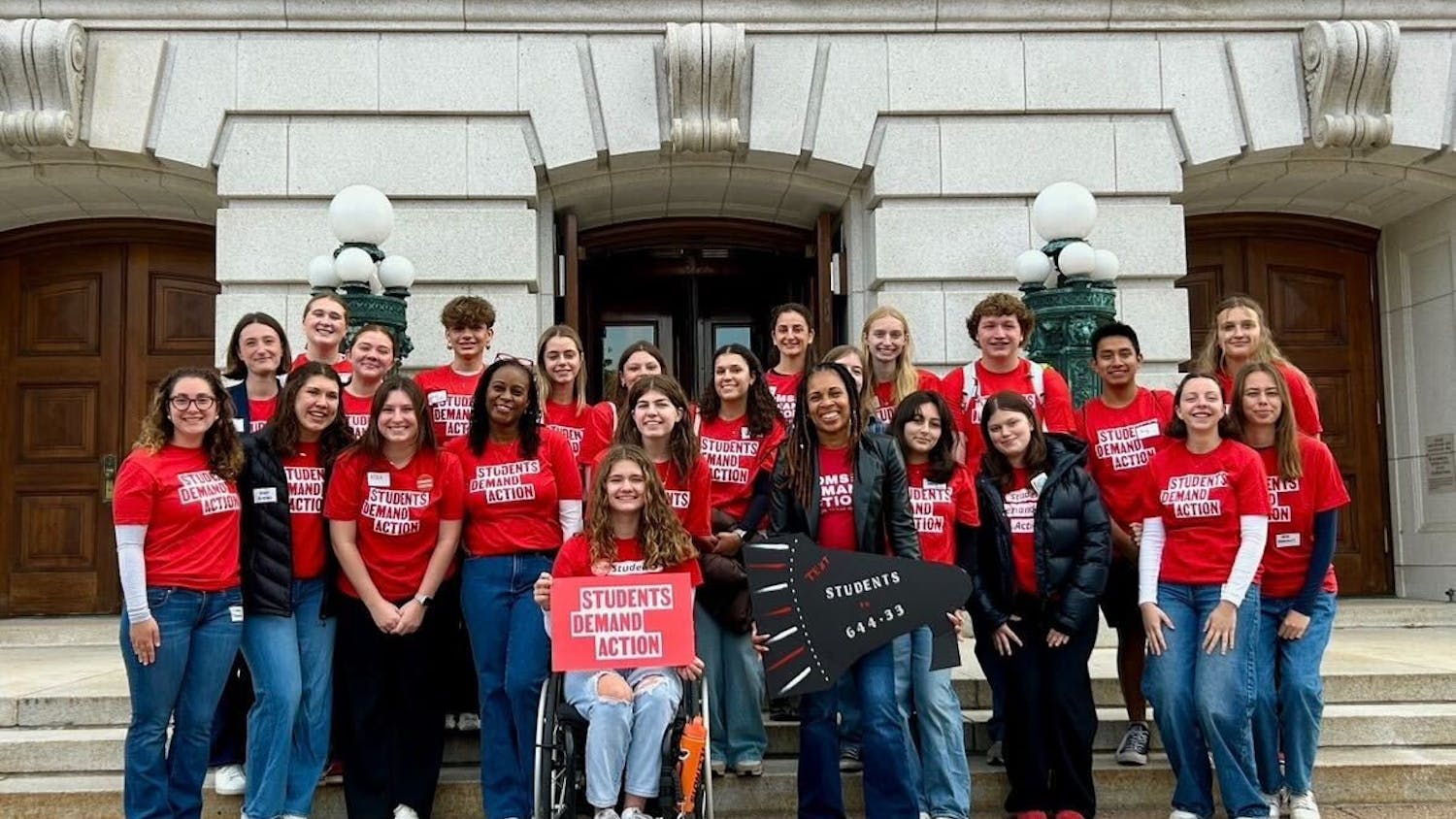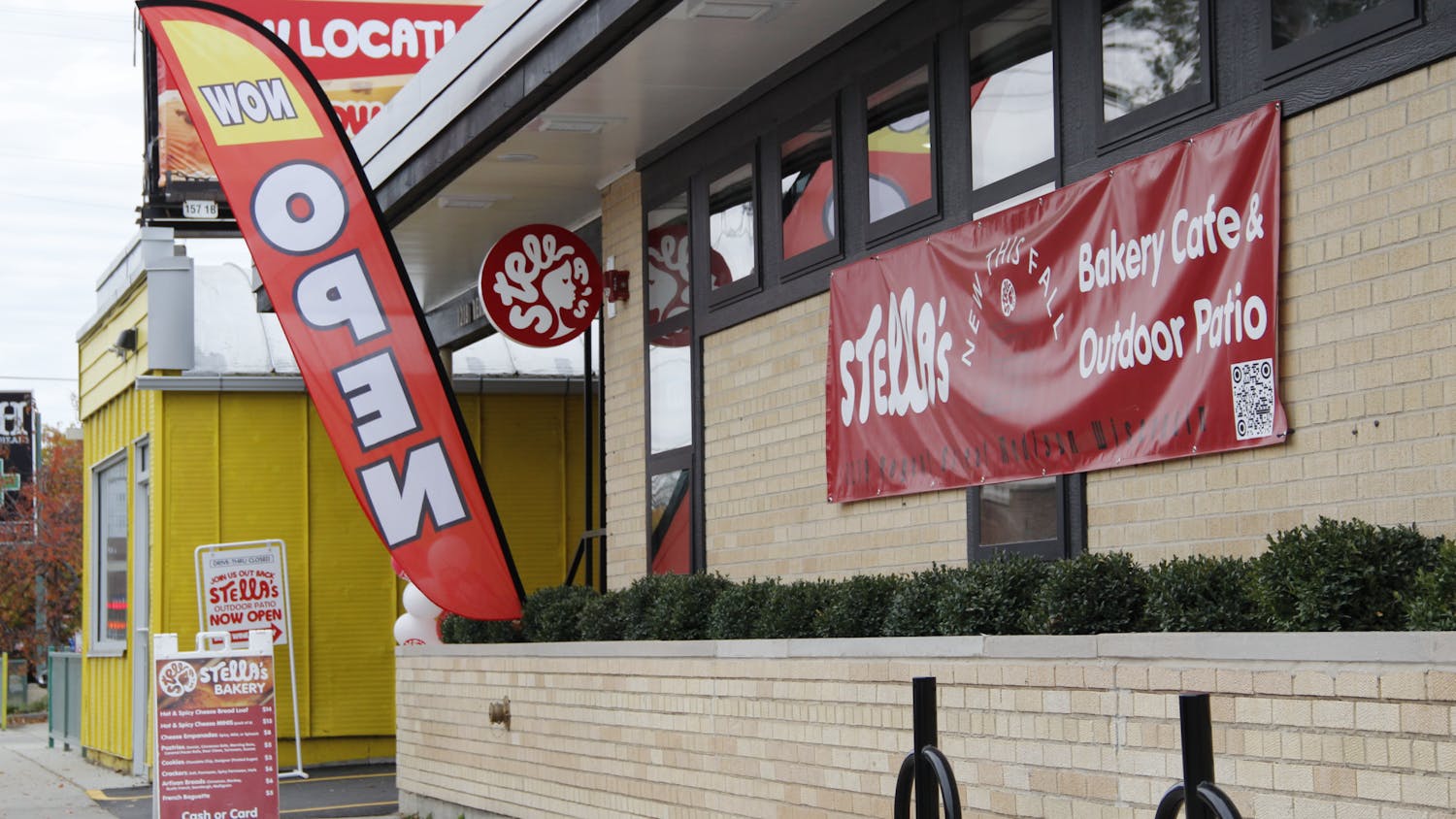Since the 1890s, The Daily Cardinal has been a lens through which Wisconsin students have seen their world. Reprinted from the pages of the Cardinal, these article excerpts show how Badgers experienced some of the biggest events of the past 120 years.
1898: Word from Dewey: Eleven Spanish war ships sunk
Just a few years after the Cardinal was founded, its pages were carrying cable reports from the Spanish American War
New York, May 7. The World is an extra just issued, publishes a dispatch from Hong Kong to the effect that news received there from Manila on the dispatch boat McCulloch is to the effect that of the entire Spanish fleet, eleven vessels were destroyed. Three hundred Spaniards were killed and four hundred wounded. No lives were lost on the United States boats, and but six persons wounded. Not one of the American ships was injured.
Washington, May 7. Dewey states that he silenced the batteries completely. He cut the cable himself. Has the bay and everything else completely at his mercy. He, however, has been unable to take possession of the town of Manila for lack of men.
1894: Wisconsin wins the championship! Haughty Minnesota is compelled to give up her honors
A Badger victory over the Gophers earned a colorful celebration
Victory!
Ours is the pennant of championship! The doughty antagonist has at last been vanquished, and Wisconsin now stands the gridiron champion of all western colleges.
Such was the result of the game with Minnesota this afternoon. The score which decided it was 6 to 0.
All day long the game was the only topic of conversation. The libraries were almost wholly deserted, and the students spent the forenoon in viewing the preparation on the campus, putting up decorations, or discussing the relative merits of the teams which were to play. Seldom has Madison seen so much cardinal bunting as today. Dwellings, fraternity houses, shops, stores, delivery wagons, and street cars, all were profusely decorated with the university color; and every student who appeared upon the street was alike patriotic—the boys with cardinal streamers fastened in their button-holes, the young ladies with pretty bows of the same all-prevailing color.
The campus has never before witnessed such a scene of excitement. The U.W. band was out, every other person had a tin horn, and the yelling was tremendous. Songs composed especially for the occasion were distributed throughout the crowd by The Daily Cardinal, and as they were set to well-known airs were shouted by the Wisconsin contingent with great vehemence. Whenever a Wisconsin man made an exceptionally good play, or an antagonist made one unusually poor, the noise was simply deafening.
NOTES OF THE GAME
Only a few times was Minnesota able to gain the necessary 5 yards.
The two kicks which Lyman made when he kicked goal were as pretty as anything ever seen on a football field.
The playing of the whole team was strong and it was by team work and not by mere weight that Wisconsin made her gains.
1918: Two Cardinal editors die for liberty
During the First World War, the Cardinal often contained the names of students—and staff members—killed overseas
Two former Cardinal editors, each among the leading men of his class, were killed in engagements along the western front during the month of August. Both men had been trained at Ft. Sheridan, had been commissioned as first lieutenant, and had seen action for several months before going over the top for the last time.
Lieutenant Theodore Robert Hoyer was graduated in 1913. For two years he taught in a government school in China, returning to Wisconsin in 1916 to take advanced work in English. When the R.O.T.C. was formed in April, 1917, he was among the first to enlist.
Lieutenant Thomas E.N. Hefferan of the class of 1918 enlisted as a French Red Cross ambulance driver early in 1917. After eight months spent in Flanders, during which time he twice distinguished himself for rescuing wounded men under fire, he returned to the United States to enter an officers’ training camp. After being commissioned first lieutenant, he sailed for France in January, serving with a field artillery unit. He was killed by a bursting shell at Chateau Thierry on August 3.
1941: Campus jolted by news
After the bombing of Pearl Harbor the paper reflected the nation’s shock, as Wisconsin braced itself for World War II
Winter and war, both long overdue, dropped out of the clouds hand in hand Sunday night with a suddenness that struck the town dumb, and left its citizens with only a dazed, uncomprehending realization of what had happened.
While the coastal cities of the country rocked with activity and excitement, Midwestern Madison was strangely subdued. Geographical position served to cushion a shock that elsewhere electrified the nation.
The Memorial Union, living room of the campus, scene of its gay social functions, became a counting house of death as the lounge radio stopped its flow of afternoon music to pour out the tidings of war. Half-dozing students were jerked out of their seats by the incredible news, and casual passersby were drawn into the room by the solemn expressions of those clustered around the radio.
From the Union the word of war spread to the lodging houses and dorms, many of which had already heard the news from their own radios. From Chadbourne hall to the Kronshage houses the campus took one convulsive gasp, and dived for the nearest radio.
Most of the men who had been standing on their head trying to figure out some means of remaining out of the draft until their graduation forgot all about diplomas and degrees. “I guess most of us won’t be here next semester,” Eldon Hill, junior pharmacy student summed it up.
At 11:30 [Dec. 8] students streamed down the Hill to the Union where hundreds crowded into the Lounge to hear the president ask for a war declaration. Loud speakers roared out war oratory all through the Union, until students, already sick of the word “war” trudged back to their rooms.
1963: Tragic news stuns ‘U’ campus
Not unlike word of Pearl Harbor, news of President John F. Kennedy’s death reverberated through UW-Madison in 1963
Noontime suddenly became a nightmare of incredulity.
Disbelief registered on dazed faces first, and then anguish, as stunned students watched the life of John Fitzgerald Kennedy ebb away in a TV hour-glass.
It was 57 minutes of hell as commentators relayed confused reports, while the President of the United States lay mortally wounded in Dallas’ Parkland Hospital.
And then finality.
“He’s dead.”
Articulate expressions of grief filtered through the gray glumness of the Madison campus by late afternoon, as solemn-faced students and administrators began to recover from the shock of President Kennedy’s assassination.
In the East Wing of Wisconsin’s Capitol, the Governor’s executive secretary, Stanley Zuckerman, fought tears as he typed a statement by Gov. John. W. Reynolds. It had been dictated moments before from Omaha where Reynolds is attending the Governors’ Conference.
“The people of Wisconsin will join the nation and the world today in mourning the death of President Kennedy.
“Our sense of shock at this senseless act is inexpressable.
“The sympathy of our people is extended to Mrs. Kennedy and the President’s family, and our prayers are with them at this moment.”
Rain streaked the city and campus as the news of the assassination spread. Everybody seemed to know it at once, but no one could believe it.
White-faced scholars stood grimly before the Union’s three TV sets, as the news was gradually spelled out in conflicting statements. They seemed transfixed as they stood watching until the unconfirmed reports were confirmed. And then they walked away, shaking their heads.
“There’s just nothing to say,” was the common reaction.
1969: Block party turns to chaos as police use gas, clubs
The very first Mifflin Street Block Party led to days of rioting
An outdoor party turned into a riot Saturday in the predominantly student populated Mifflin and Bassett Street area.
By Sunday afternoon, arrest rolls had grown to 50, including two city aldermen, Paul Soglin, Ward 8, and Eugene Parks, Ward 5.
Students hurled rocks and bricks at passing patrol cars and officers. Two Molotov cocktails were reportedly hurled in Bassett St. late Saturday night.
As of 9:30 Sunday night, Madison General Hospital reported having treated 17 patients as a result of the melee. Six were students and 11 were Madison police, and all were injured Saturday.
Police tactics escalated as darkness fell on the tense streets Saturday. Students erected barricades on Mifflin, Bassett, West Johnson and West Washington streets, which were torn down numerous times by police patrol cars traveling at speeds estimated at 40 miles an hour.
The barricades were erected out of scrap lumber, garbage cans, and dirt. A large truck was pushed out into the middle of West Washington Avenue by students shouting “Paris Lives!”
Throughout the afternoon and evening and into Sunday afternoon, police demanding identification and destination arrested people at random and stopped groups walking along the streets.
Tear gas canisters spitting flames crackled throughout the neighborhood until a dense pall had settled over the frame houses.
2008: ‘This is your victory’
Regardless of your party, the most recent presidential election held an undeniable historical significance
For President-elect Barack Obama, the path to change began 21 months ago on a grassroots scale as a relatively unknown, unfunded and unendorsed candidate. But in a country bitterly divided, Obama hitched his start to an unyielding mantra of hope and unity—and as his ideals took root in the hearts of Americans, he began to rise.
Over the course of our nation’s 232-year history, racial prejudice and intolerance have, at times, been defining characteristics. On November 4th, 2008, the United States voted in staggering numbers to elect President Barack Obama, the first black president in our nation’s history. This election will be marked by record-breaking fundraising efforts, voter turnout and an impassioned youth demographic, but most significantly by the nation’s decision to break the racial barrier and elect a black man to the highest, most revered position in our democracy—no longer a dream deferred, but a dream secured. After this historic achievement, President Barack Obama will face monumental challenges, including repairing the economy, addressing our war presence and—perhaps most importantly—fulfilling his promise to unite our government and serve the American people regardless of party lines.






